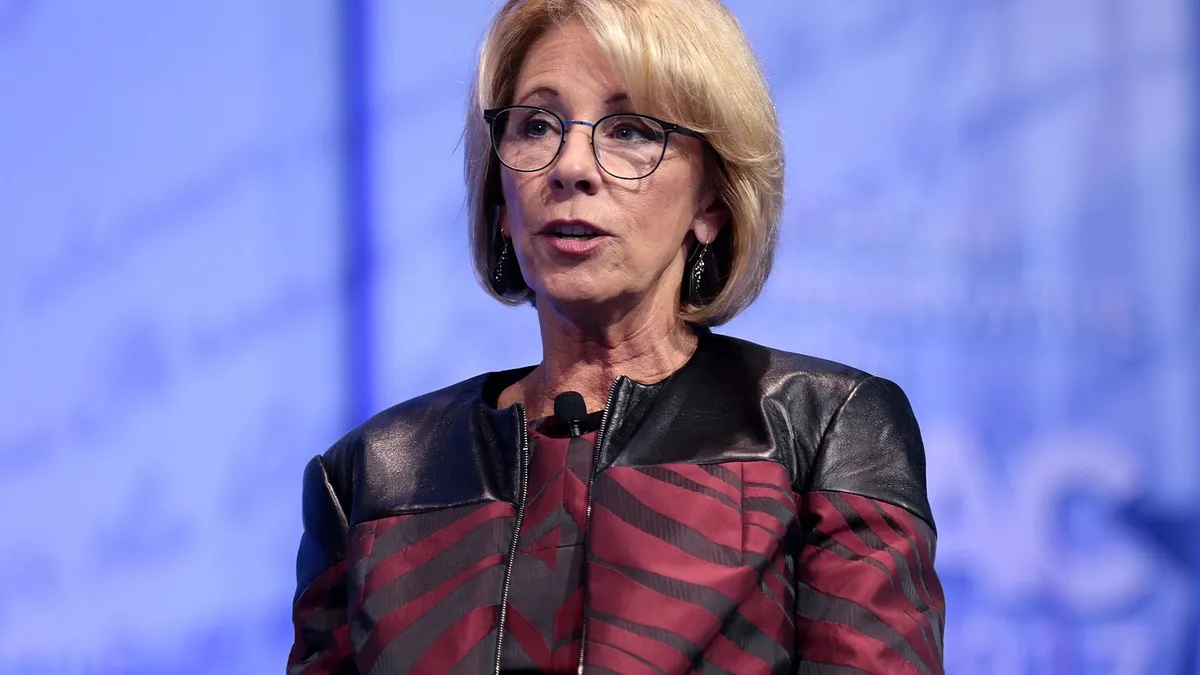Dive Brief:
- Speaking at the 2017 Principal of the Year Institute in Washington this week, U.S. Secretary of Education Betsy DeVos talked about the need to cut federal red tape and to give state and local leaders as much autonomy as possible, Education Week reports.
- She also urged superintendents to follow suit by extending flexibility and decision-making power to principals with the goal of allowing school leaders to “spend more time focusing on the people, not on the paperwork."
- DeVos also stressed that she and her team would look at “each and every federal regulation that affects you and identify every regulation that can be modified, or better yet, done away with to give you more flexibility to meet students' needs."
Dive Insight:
DeVos's comments at the event, hosted by the National Association of Secondary School Principals, are in keeping with her commitment to reduce bureaucratic regulations in education. In June, DeVos told a gathering of educators at a gathering of the National Alliance for Public Charter Schools, “Many who call themselves ‘reformers’ have instead become just another breed of bureaucrats — a new education establishment.”
While most educators can agree that reducing paperwork and unnecessary regulations would be a good thing, there is some concern over which regulations DeVos intends to remove. Some regulations, after all, were put in place to protect students and improve educational equity. With recent concerns over efforts at resegregation in some areas, for instance, certain regulations need to be protected, if not strengthened.
DeVos supports ESSA’s efforts to restore more local control to states and school districts. In her remarks this week, she also applies the idea of local control in the context of giving principals more power over their own schools. While many principals would agree with that position, some studies still question whether increasing principal control actually improves academic scores on a consistent basis. What is clear is that principals know the needs of their students and teachers better than anyone else in the educational hierarchy. Every school is different and faces different challenges. Meeting those challenges requires flexibility and the power to affect change.











